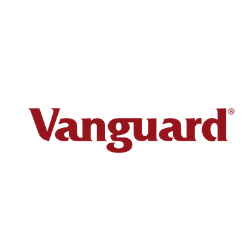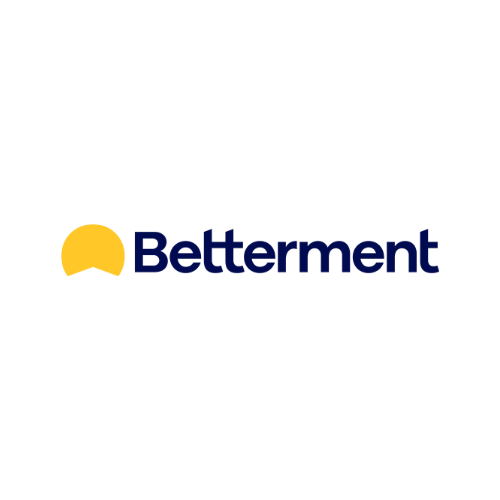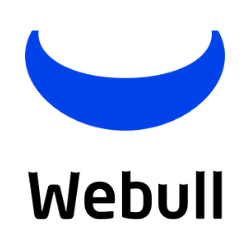What is a Boglehead and What Can You Learn From One?
Some products in this article are from our partners. Read our Advertiser Discloser.
Are you afraid to invest because you think it’s too hard or time-consuming?
Perhaps you should try investing like a Boglehead in index funds. Made famous by legendary investor Jack Bogle, it is one of the most popular ways you can earn passive income. Maybe you know Jack Bogle as the founder of the Vanguard investment company.
The Boglehead investing plan is simple and requires minimal effort or investing fees. You can even invest like a Boglehead with small amounts of money.
It’s possible that you already invest more like a Boglehead than you realize.
What is Boglehead Investing?
Index funds are Bogleheads favorite investment option. These passive investing funds have low fund fees and are easy-to-own. Also, they are an easy-to-understand investment.
Jack Bogle receives the credit for launching the first index fund in 1976. Over time, index funds have become very popular because they outperform most active investors. A 2016 Standard & Poors study shows that over 85% of active fund managers underperform their benchmark index over five years.
Active funds charge more fees than index funds and have lower long-term results. In other words, you can make more money investing with index funds than most active funds.
How Index Funds Work
Index funds mimic the performance of the stock index they track. For instance, an S&P 500 index fund matches the daily performance of the S&P 500 index. It invests in the same companies.
For example, the S&P 500 average annual return is approximately 8%, according to Investopedia. An S&P 500 index fund matches the daily performance of the S&P 500. So if the index is up 1%, the index fund is as well. Because index funds charge small fees (like 0.05%), the performance will be slightly lower than the actual index.
You can purchase Index funds as a mutual fund or ETF (exchange-traded fund). The main difference between these how often you can buy or sell each fund each day.
Mutual funds only trade once a day after the market closes. ETFs can be bought or sold at any time during regular market hours.
Yes, index funds sound boring, but they are effective. One common trend for these early retirees is their love for index funds.
Active Investing vs Passive Investing
Instead of investing in companies you hope will outperform the broad market (active investing), Bogleheads try to match a stock market index performance.
Boglehead investing isn’t buying shares of individual stocks or actively-managed funds that try hoping to beat the stock market. Why? Even the best investors do not consistently outperform the market. You may also have to pay trade fees and taxes each time you sell, which reduces your long-term profits as well.
Some Bogleheads do trade stocks or invest in real estate. However, most of their portfolio is in low-cost index funds.
Investment Philosophy
Bogleheads follow ten investing rules to be successful investors:
- Develop a workable plan
- Invest early and often
- Never bear too much or too little risk
- Diversify
- Never time the market
- Use index funds when possible
- Keep costs low
- Minimize taxes
- Invest with simplicity
- Stay the course
You might be a first-time investor ready to invest $1,000 or have 30 years of experience. Bogleheads try to keep investing simple and affordable for every person. These ten rules will be part of that.
For now, let’s look at two Boglehead investment strategies. Both of these tidbits are important if you buy index funds or not.
Keep Expenses Low
Keeping daily costs low and investing expenses as low as possible means you can have more disposable income to invest. For example, most online brokerages don’t charge a fee to buy index funds.
Dollar-Cost Average
Successful Bogleheads also invest regularly with dollar-cost averaging. This strategy prevents you from timing the market. You will also invest often.
For example, they may invest 10% of each paycheck into their 401k account. No matter how the stock market is performing, you invest the same amount on the same day each month.
Focus on building long-term wealth instead of worrying about short-term market movements.
Bogleheads 3 Fund Portfolio
Investing in index funds is a great start to becoming a Boglehead. Having a diversified portfolio is also important. Owning three index funds gives you exposure to most U.S. and international companies.
Most Bogleheads use Vanguard as their investment brokerage. After all, John Bogle is the founder of Vanguard. And Vanguard was one of the first brokerages to offer low-cost index funds.
If you don’t use Vanguard, online stock brokers like Fidelity and Schwab have their version of the following index funds.
One of the most common Boglehead portfolios holds these three index funds:
- Vanguard Total Stock Market
- Holdings: Entire U.S. stock market
- Mutual fund symbol: VTSAX
- ETF symbol: VTI
- Vanguard Total International
- Holdings: Non-U.S. stocks for developed and emerging markets
- Mutual fund symbol: VTIAX
- ETF symbol: VXUS
- Vanguard Total Bond Market (VBMFX)
- Holdings: Investment-grade corporate and U.S. government bonds
- Mutual fund symbol: VBTLX
- ETF symbol: BND
These three funds let you invest in almost every publicly-traded company on the planet. Holding many small positions means you have a diversified portfolio. As you know, diversification minimizes your downside risk.
Some Bogleheads substitute other index funds. For example, they may invest in the Vanguard S&P 500 index fund instead of the Total Stock Market index fund. Or they invest the tax-exempt bond fund if the three-fund portfolio is in a taxable account.
Portfolio Allocation
Your age and investment goals influence your stock-to-bond asset allocation. Remember that Bogleheads “never bear too little or too much risk.” For example, how you save one million dollars will change as you near retirement.
No retiree wants to lose most of their net worth in a single market correction. As you age, your investments become more conservative to protect your wealth.
Investing experts recommend younger investors to invest more aggressively in stocks than older investors. Stocks are riskier but offer higher potential rewards than bonds. Retirees prefer bonds that are less-risky and provide smaller yet more stable yields.
When you’re 25 years old, your portfolio might be 80% stocks and 20% bonds. But when you retire, you may own 40% stocks and 60% bonds to avoid market volatility.
Your earliest investments will earn the most compound interest because of three factors:
- More time in the market means more years to earn interest
- Stocks can earn higher returns than bonds but are riskier
- Bonds are less risky and provide more predictable returns but have less growth potential
This is why it’s so early to invest early and invest often. The sooner you start investing, the more time your money has to grow. Investing new money at least once a month helps your net worth grow.
Your brokerage should have a risk tolerance quiz to help you decide the best asset mix for your age and goals.
Mutual Funds vs Index ETFs
Most online brokers offer mutual fund and ETF versions of index funds. Both options have the same portfolio. However, ETFs can require less upfront money to buy. ETF fund fees are usually lower than mutual funds too.
Most Vanguard mutual funds currently have a $3,000 minimum initial investment for personal accounts. Vanguard waives this minimum for 401k plans. If you buy mutual funds, your initial investment is $9,000 for the Boglehead three-fund portfolio. Additional investments only need to be $1 per fund.
For your taxable or IRA accounts, you can invest in mutual funds or ETFs. ETFs can be a better option if you invest small amounts of money. This is because your minimum investment is the cost of one ETF share.
As of October 2, 2019, the combined price for one share of all three ETFs is $282. That’s a lot more affordable than $9,000 to own the same investments.
Tip: You can buy partial shares of all index ETFs with M1 Finance. This platform is 100% free to use.
Bogleheads Forum
Another way to learn more about what is a Boglehead exactly is by visiting Bogleheads.org. This is a free online forum that discusses all things Boglehead-related. The forum is not associated with Vanguard. It’s run by average investors who love investing in index funds.
You can get index fund ideas or advice on how to allocate your portfolio. It’s also possible to get guidance for investing in non-Vanguard index funds. For instance, you might have a Fidelity 401k plan and need help making a Boglehead portfolio.
There are even non-investing forum topics like buying a home without a mortgage. Most subjects focus on passive investing or saving money.
Bogleheads Guide to Investing
You can also read the Bogleheads Guide to Investing. It’s available on Kindle, Audible and print.
This book goes covers many investment topics. For example, how you can invest like a Boglehead with a Roth IRA.
Top Places to Buy Index Funds
It’s possible to invest like Boglehead at any online stock brokerage with index funds. These are some of the best places to open an account. Most of these brokers offer Vanguard index funds.
Choosing Vanguard funds might be the easiest because they Bogleheads talk about them more than non-Vanguard funds. Although owning Vanguard funds are not the only way to be a successful Boglehead.
1. Vanguard
Vanguard can be the most logical brokerage because its founder is John Bogle. They have the widest selection of Vanguard index funds. There are no account fees when you enroll in paperless documents. You won’t pay any trade fees for Vanguard mutual funds or ETFs.
If you have at least a $50,000 account balance, a Vanguard personal advisor can manage your account. However, you will pay 0.30% on the first $5 million in managed assets. That’s a $3 annual fee for every $1,000 Vanguard manages.
2. Betterment
Perhaps you don’t have the time or desire to manage your own investments. Betterment is very affordable and one of the best robo-advisors. They use a slightly more complex index fund ETF investing strategy.
Instead of the Boglehead three-fund portfolio, you might have 12 different ETFs. Each Vanguard or iShares ETF invests in a specific stock index or bond sector.
Betterment will rebalance your portfolio with each new investment. They also use tax-loss harvesting to minimize your capital gains taxes.
You only need $1 to open an account. Annual account fees are 0.25% of the account balance.
3. M1 Finance
Here are two great reasons to use M1 Finance. First, it’s fee-free. Second, you can buy partial shares of ETFs and stocks. Let’s say you only have $50 to invest, but an ETF share costs $100. M1 Finance lets you buy a half-share. Another broker will make you wait until you have enough cash.
It’s possible to invest in premade index ETF portfolios. But you can easily choose your own ETFs. The Vanguard index ETFs are available to make your Boglehead portfolio.
With M1, you can easily invest $100 in multiple funds based on your target allocation. Taxable accounts require a $100 initial deposit, and IRAs need $500. All future investments only need to be $10.
4. Ally Invest
Ally Invest offers a free robo-advisor service. Their cash-enhanced managed portfolio invests in stock and bond ETFs. They also keep 30% of your portfolio in an interest-bearing cash account.
This cash account is different than the typical Boglehead investment approach. However, your cash still earns interest so that every dollar can earn passive income.
DIY investors can also buy ETFs and stocks in a self-directed account. However, you will pay $4.95 per trade as of October 3, 2019. You should use another broker if you want to manage your own Boglehead portfolio.
5. Webull
Advanced investors might like Webull. You only need $100 to open an account, and all trades are free. Most of your investments might be in index ETFs. But you may also want to trade stock or options.
Webull is one of the few free investing apps that offer in-depth research tools and paper trading. You can use these tools to test your high-conviction ideas. And you can diversify your investments fee-free.
6. Fidelity
Fidelity offers four fee-free index mutual funds. The Fidelity ZERO index mutual funds don’t charge fund expenses. Even the Vanguard index funds charge a small fee to cover costs.
And the minimum initial investment is only $1 for all Fidelity index mutual funds. Remember that Vanguard mutual funds have a $3,000 initial investment.
There isn’t a ZERO bond fund yet, but there are two stock index funds:
- Fidelity ZERO Total Market Index Fund (U.S. stocks)
- Fidelity ZERO International Index Fund (Global, non-U.S. stocks)
The Fidelity US Bond Index can give you exposure to the bond market and has a 0.025% fund fee. This fee is slightly less than the Vanguard Total Bond Fund annual fee of 0.05%.
Summary
Almost anyone can become a Boglehead investor and become wealthy. The secret is investing in low-cost index funds.
Investing doesn’t have to be hard or stressful. Diversify your investments and let your money do the hard work of earning compound interest.







Excellent article on Bogleheads, I wish more people knew about their site,
they are THE source to go to for trustworthy financial information of every kind,
including and especially the stock market. Thanks for making this available.